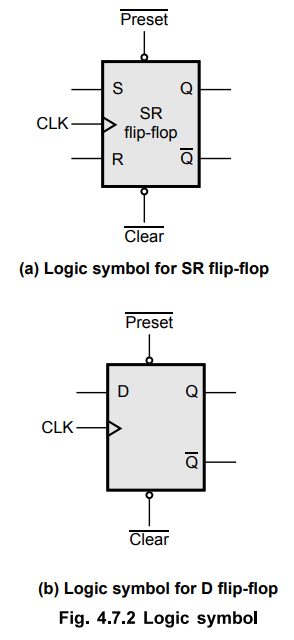Digital Logic Circuits: Unit III: (a) Flip-Flops
Asynchronous or Direct Inputs
Flip-Flops
• For the flip-flops discussed so far, the SR, D, JK, and T, the inputs are called synchronous inputs because data on these inputs are transferred to the flip-flop's output only on the triggering edge of the clock pulse; that is, the data are transferred synchronously with the clock.
Asynchronous or Direct Inputs
•
For the flip-flops discussed so far, the SR, D, JK, and T, the inputs are
called synchronous inputs because data on these inputs are transferred to the
flip-flop's output only on the triggering edge of the clock pulse; that is, the
data are transferred synchronously with the clock.
•
When power is turn ON, the state of the flip-flop is uncertain. It may come to
set (Q = 1) or reset (Q = 0) state. In many applications, it is necessary to
initially set or reset the flip-flop.

Such
initial state of flip-flop can be accomplished by using the direct or
asynchronous inputs of the flip-flop. These inputs are :  They
can be applied at any time between clock pulses and are not in synchronism with
the clock.
They
can be applied at any time between clock pulses and are not in synchronism with
the clock.
•
The Fig. 4.7.1 shows the SR and D flip-flops with preset and clear inputs.
These are active-low inputs and thus when  the circuit operates in
accordance with the truth table of SR flip-flop. If
the circuit operates in
accordance with the truth table of SR flip-flop. If  , the
flip-flop is reset and
, the
flip-flop is reset and  the flip-flop is set.
the flip-flop is set.

Note
: Condition
P = C = 0 must not be used, since this leads to an uncertain state.
Digital Logic Circuits: Unit III: (a) Flip-Flops : Tag: : Flip-Flops - Asynchronous or Direct Inputs
Related Topics
Related Subjects
Digital Logic Circuits
EE3302 3rd Semester EEE Dept | 2021 Regulation | 3rd Semester EEE Dept 2021 Regulation
